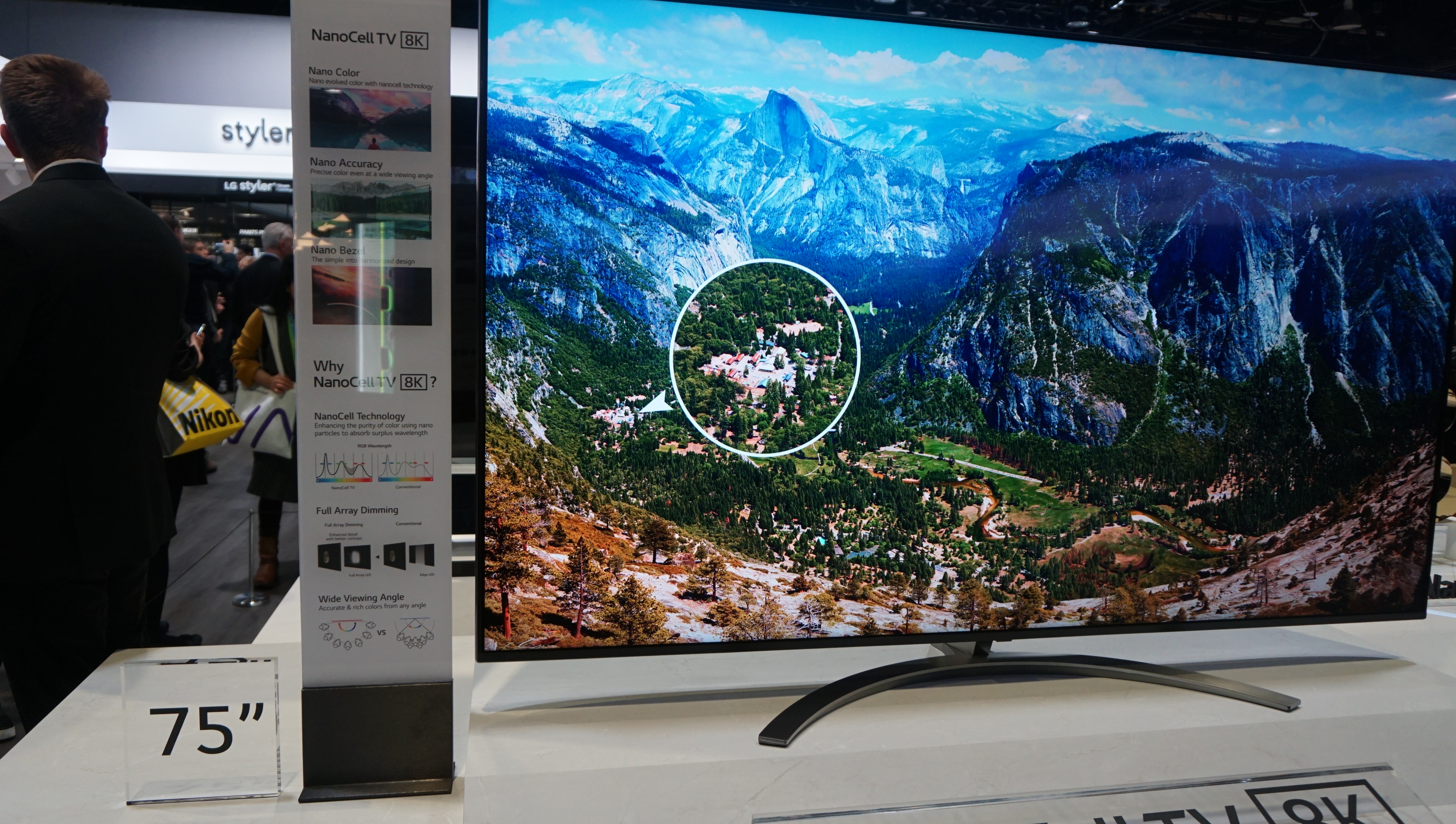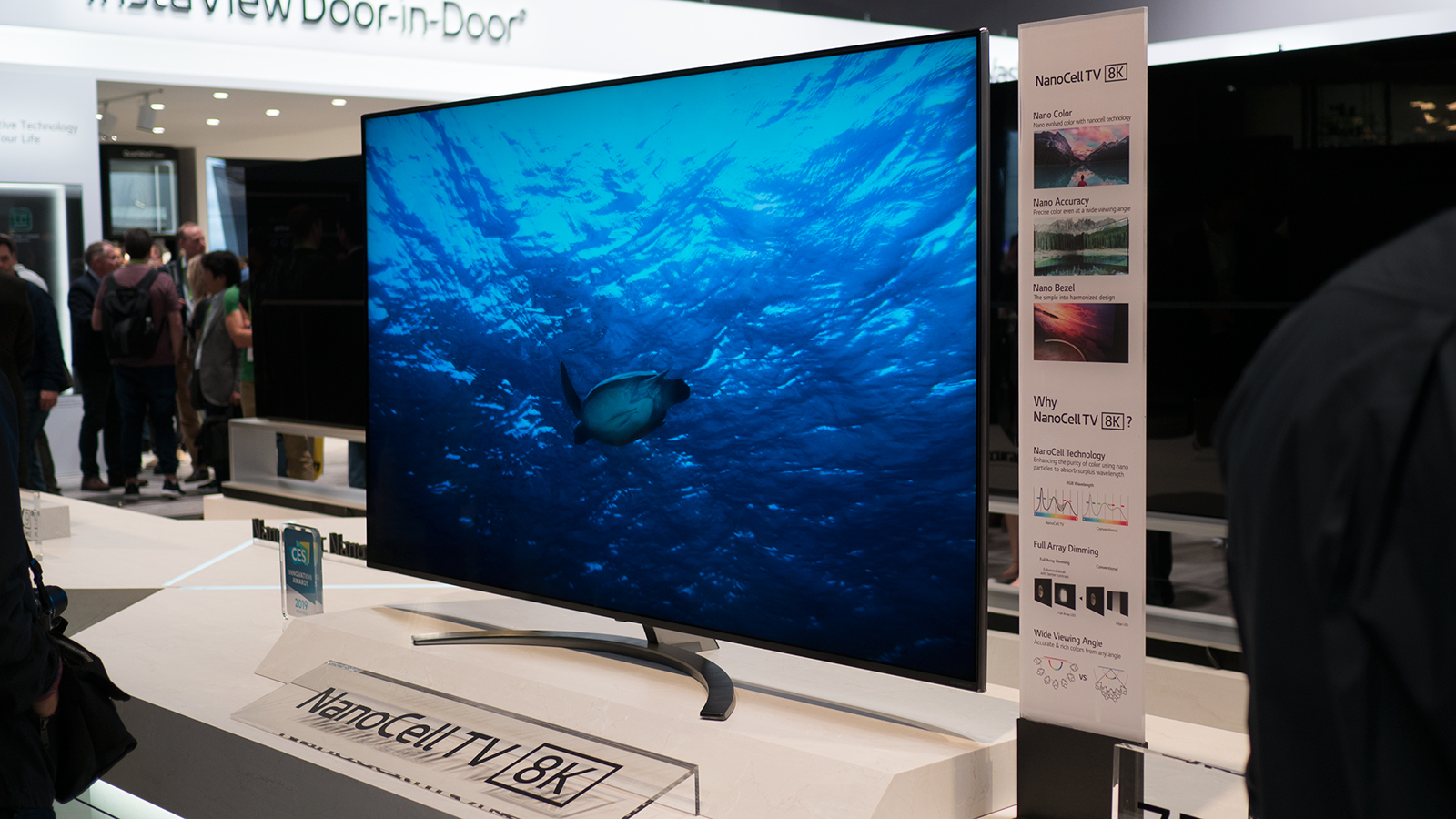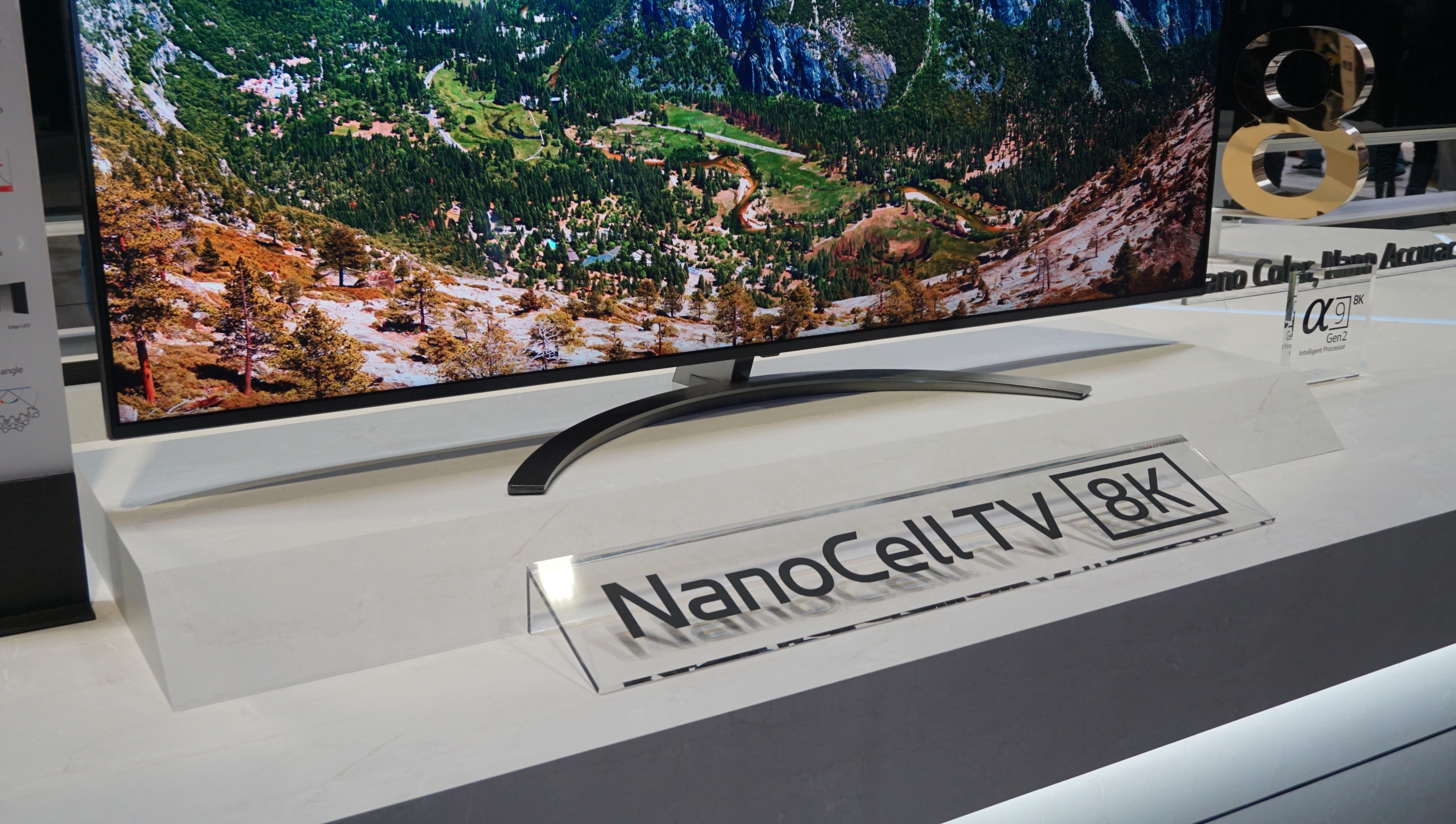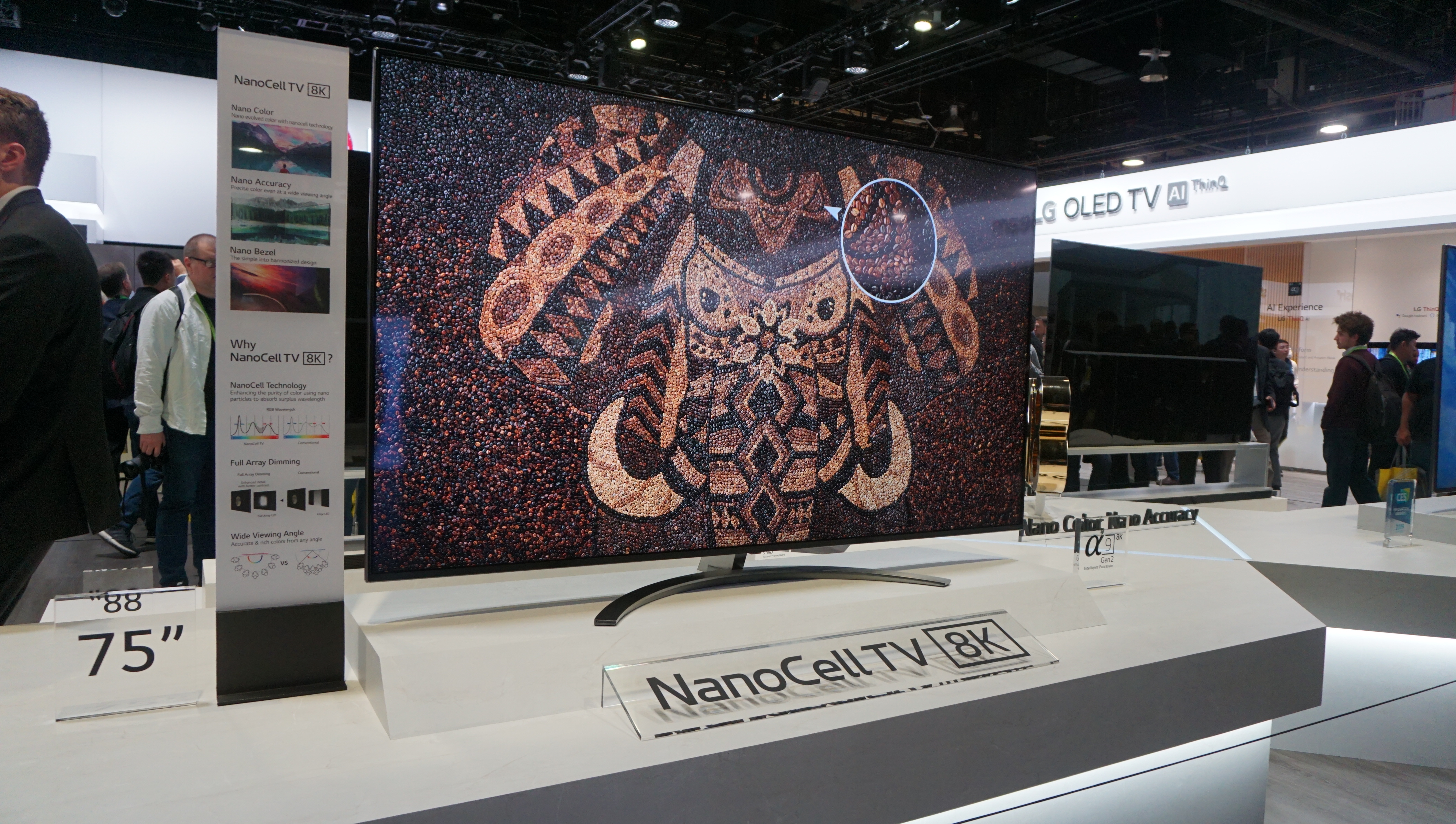Early Verdict
While LG's 2019 Nano Cell flagship screen wasn't as impressive as the rollable Signature Series OLED TV R and 88-inch 8K OLED, we're not writing it off yet.
Pros
- +
Direct LED lighting
- +
2nd Gen Alpha a9 processor
- +
WebOS 4.5
Cons
- -
Less bright than you'd expect
- -
Oversaturated images
- -
Poor black level performance
Why you can trust TechRadar
LG has embraced 8K in a pretty big (pun intended) way at CES 2019 – we’ve already taken an early look at the brand’s incredible-looking 88-inch 8K OLED TV, as well as Sony's competitive new Master Series Z9G, and now it’s the turn of the much more manageable and, likely, much more affordable 75-inch 8K LCD set, the 75SM99.
Of course, it's worth pointing out that if Nano Cell sounds like a cool, new technology that's being introduced for the first time at CES 2019, you'd be mistaken. Nano Cell is actually just the re-branded name for LG's Super UHD TV series that it's been selling for the last few years. (That's not to say that Nano Cell is an empty gimmick – far from it – as it refers to the proprietary Quantum Dot technology that LG employs.)
So just how does LG's 2019 new-and-improved Nano Cell TVs get on? Here's what we found out.
Design
The 75SM99 does not, it must be said, deliver the same instant wow factor that the OLED 8K set does. Its 75-inch screen looks pretty much mainstream by today’s ever growing TV screen standards, and its design is much more ‘straightforward’ than that of the stunningly slim OLED model.
The frame around the screen is wider, for instance, and the rear is much chunkier. The whole thing looks a bit plasticky, too.
While the chubbiness might not make the 75SM99 a particularly gorgeous slice of next-gen technology, though, there is at least a solid technological reason for it: it contains a direct LED lighting system.
Putting the TV’s LED lights directly behind the screen rather than around its edges pretty much always results in a better contrast performance. Especially when, as is the case here, the direct lighting is backed up by a local dimming engine. LG would not, sadly, be persuaded to reveal how many separate dimming zones the 75SM99 might have.
Sign up for breaking news, reviews, opinion, top tech deals, and more.
It's also worth pointing out that the 75SM99 shares the same second generation Alpha 9 chipset as LG’s 8K OLED TV, together with the same extra optimisations designed specifically to get the most out of the 8K upscaling process. That's important because native 8K content is essentially non-existent.
It also boasts HDMI 2.1 input support so that it can handle 8K signals up to 60Hz, and it delivers all the new webOS features also found on all of LG’s 2019 TVs.

Performance
So how do its pictures seem to be shaping up? Well, the first thing that should be said is that the 75SM99 is still months away from launching, and LG was keen to stress repeatedly that its picture performance is far from final.
Based on what we’ve seen so far, though, we have to say that it looks like LG still has a pretty long way to go if it wants to make the 75SM99 as exciting a proposition as most of the other 8K TVs out there.
That said, there are four issues with the 75SM99 as it stands right now.
First, its pictures don’t actually look particularly 8K. Yes, it’s true that even if you stick your face right up to the screen you can’t see any pixels in the picture. But the actual picture itself doesn’t always look quite as sharp as we would expect.

This is particularly true when there’s a lot of really heavy colour saturation in the image - during shots, for instance, of an exceptionally sun-drenched beach, or some red-coloured running water. Which brings me to issue two: that there seems to be some weakness in the TV’s colour processing/management that’s preventing it from delivering the sort of minute colour differentiations an 8K picture needs if it wants to consistently deliver the maximum impact from its 8K pixel count.
The 75SM99 uses LG’s Nano Crystal technology, which is specifically designed to deliver an expanded colour performance. But it doesn’t feel that LG has yet figured out how to fully unlock Nano Crystal’s potential in an 8K environment.
The third issue is that pictures don’t look as bright as I would have expected. Fitting 8K pixel counts into an LCD screen is known to cause potential brightness issues, and right now it seems that the 75SM99 hasn’t got enough power or, perhaps more likely, enough localised control over its backlighting to deliver the sort of extreme punch that we’re seeing on other 8K TVs.

Oddly, LG’s 8K OLED TV actually looks much punchier than the 75SM99, even though, typically, high end LCD TVs would be expected to look brighter than OLED ones.
The final, more predictable issue with the 75SM99 is that even under the harsh lights of the CES show floor, you could clearly see that the screen’s black level doesn’t seem particularly great. This is a fairly typical attribute of the IPS technology LG always uses for its LCD TVs. But that doesn’t make it any less potentially problematic.
Early verdict
Despite these limitations, you shouldn't write the LG 75SM99 off just yet. There’s still plenty of time for LG to improve things, and we suspect this set has a very real chance of being much more affordable than the majority of 8K TVs.
As things stand right now, though, there’s just no denying that 75SM99 feels off the pace being set by most of the other 8K early runners.
- Check out all of TechRadar's CES 2019 coverage. We're live in Las Vegas to bring you all the breaking tech news and launches, plus hands-on reviews of everything from 8K TVs and foldable displays to new phones, laptops and smart home gadgets.

John has been writing about home entertainment technology for more than two decades - an especially impressive feat considering he still claims to only be 35 years old (yeah, right). In that time he’s reviewed hundreds if not thousands of TVs, projectors and speakers, and spent frankly far too long sitting by himself in a dark room.
What is a hands on review?
Hands on reviews' are a journalist's first impressions of a piece of kit based on spending some time with it. It may be just a few moments, or a few hours. The important thing is we have been able to play with it ourselves and can give you some sense of what it's like to use, even if it's only an embryonic view. For more information, see TechRadar's Reviews Guarantee.
